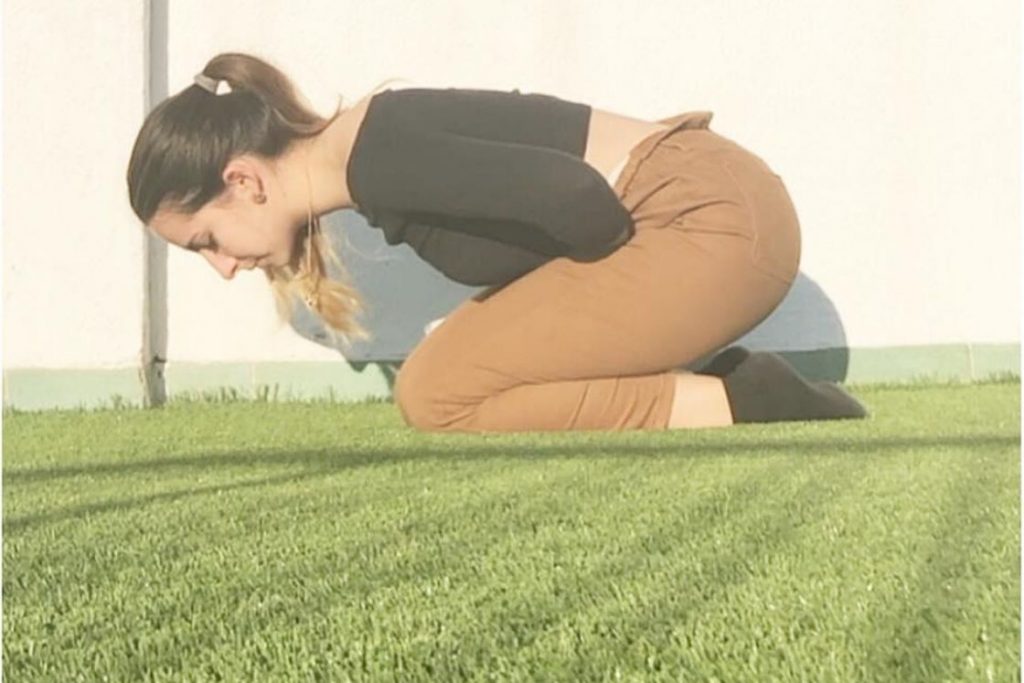
Mandukasana is a seated posture that tones the abdominal region, thighs muscles, enhances digestion, and lubricates knee joints.
It is a simple yet effective pose and can be easily practiced by beginner practitioners. Bow down in this asana relaxes the mind and body that energize the body’s aura.
Meaning
Mandukasana is a Sanskrit word which can be comprehended as ‘manduka‘ means ‘frog’ and ‘asana‘ means ‘pose’. The position of legs in this asana makes it similar to the frog; Hence, the name itself. Another frog like asana in yoga is Bhekasana.
Getting into this asana gathers energy inwards. It allows the practitioner to turn dissipation of energy into transferring it from the outer world to within; for sustaining in an intense self-state.
The complete description of Mandukasana was given by Vishnudevananda Saraswati in his book “The Complete Illustrated Book of Yoga”.
Mandukasana along with its Variation Uttanamandukasan are mentioned in the list of 32 useful asanas according to classical text like Gheranda Samhita.
Practice Guide of Mandukasana
Following steps can be opted for the safe practice of this asana.
Precautions & Contraindications
- Practitioners with the conditions of peptic, duodenal ulcers, or abdominal surgery in the recent past should avoid practice this asana.
- In, Lower back and spinal injury; one should refrain from doing this asana.
- Pregnant women might consult with a qualified yoga teacher or doctor before pursuing the practice.
- Stomach ache, diarrhea, knee, and ankle related condition should wait till recovery to do Mandukasana.
Preparatory Pose
- Child Pose (Balasana)
- Thunderbolt Pose (Vajrasana)
- Bound Angle Pose (Baddha Konasana)
Mandukasana Steps(How to Do)
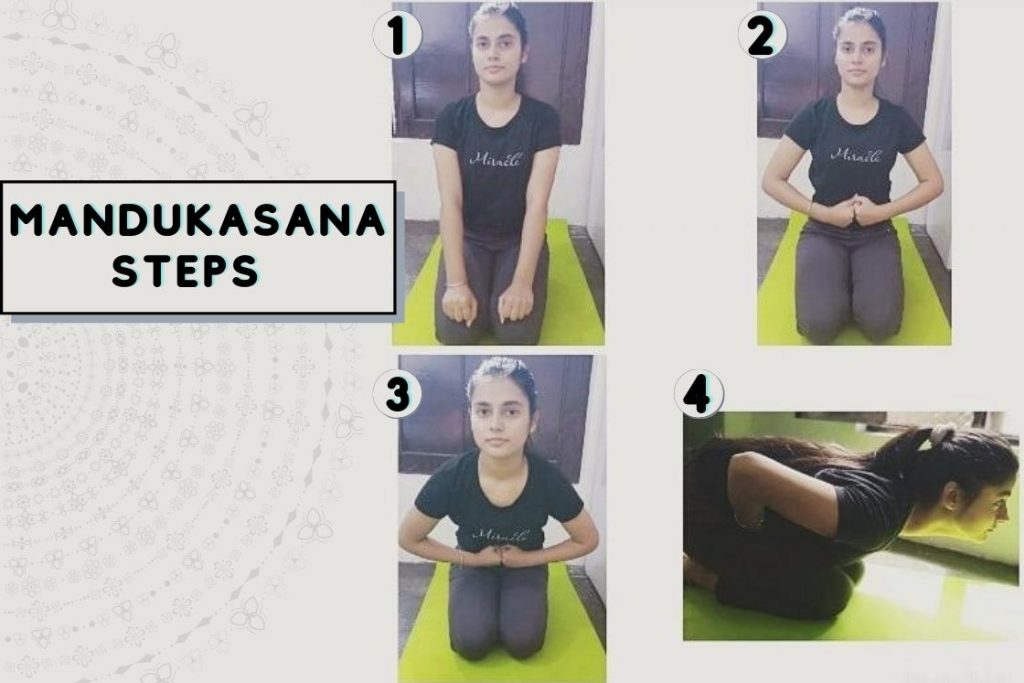
- Come into Vajrasana on your mat. Your toes touching each other behind the body.
- Now, bring your hand before the abdomen. Make Adi Mudra with your hands.
- Inhale and fully exhale; while hands in Adi Mudra place on either side of your navel. From here, draw navel inside
- Now, slowly bend forward while applying a slight pressure through the fist on the abdomen.
- Gaze to the forward or towards the ceiling while bending; this will keep your back in a straight line.
- This is the final position of Mandukasana: hold the pose here.
Retain your breath out and hold as long as possible or breathe slowly. Do it for 30 to 60 seconds.
Release
To release Mandukasana, release the pressure you were applying on the abdomen and slowly straighten your torso while inhaling. Place your hands by the hips and sit relaxed in Vajrasana.
Mandukasana Beginners Tips
- Beginners ensure that while bending forward your chest should touch your thigh.
- Avoid breath retention if you are unfamiliar with it. Go with shallow breathing or return when you run out of oxygen.
Follow Up Pose
- Dolphin Pose (Ardha Pincha Myurasana)
- Cow Pose (Gomukhasana)
- Supine Twist (Jathara Parivartanasana)
Mandukasana Variations
One can deepen the Mandukasana with its common practiced variations:
Adho Mukha Mandukasana
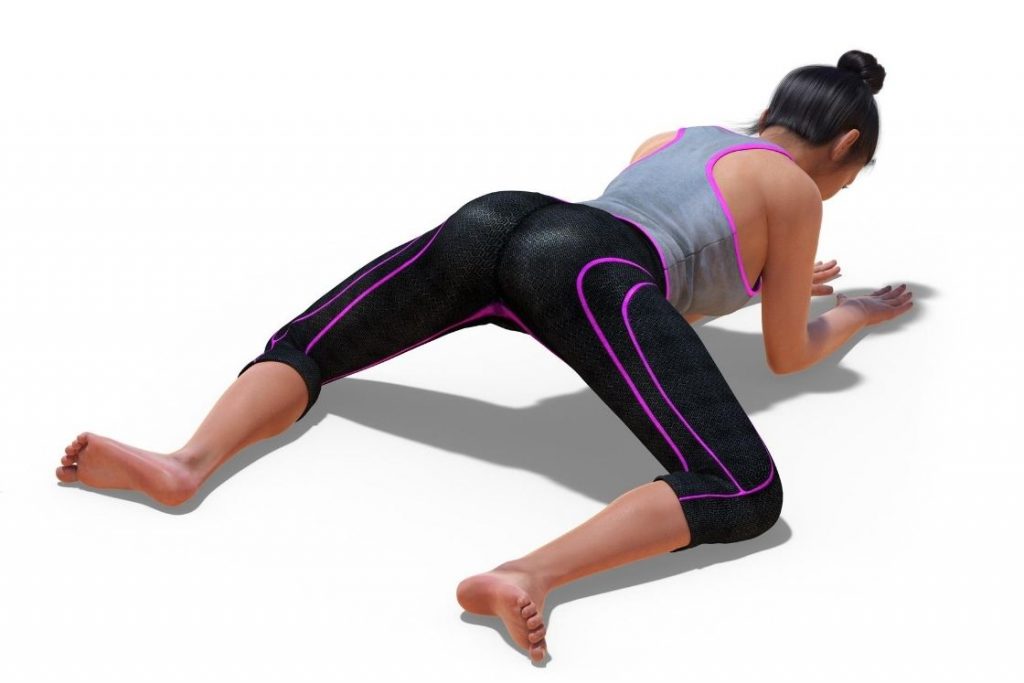
This variation of Mandukasana is the most practiced pose for opening tight hip muscles. In this, the head goes down from the chest level so it’s called Adho Mukha Mandukasana i.e. Downward facing frog pose.
- Sit in Vajrasana, then come into the tabletop position.
- Now, spread your knees apart as wide as comfortable by sliding through your shin and knees.
- Rest your elbow and forearms on the ground, either place your palms firm on the floor or interlock finger together giving the shape of a fist hammer.
- Raise your tailbone, broadened your lower back, and experience a deep stretch in thighs and hips. This will allow you to reach fully into the posture.
- Hold the position for few breaths or as per your comfort.
- After it, walk through the hand or arms forward while lowering the hips and rest of the body to lie flat on the floor and relax.
2. Uttana Mandukasana
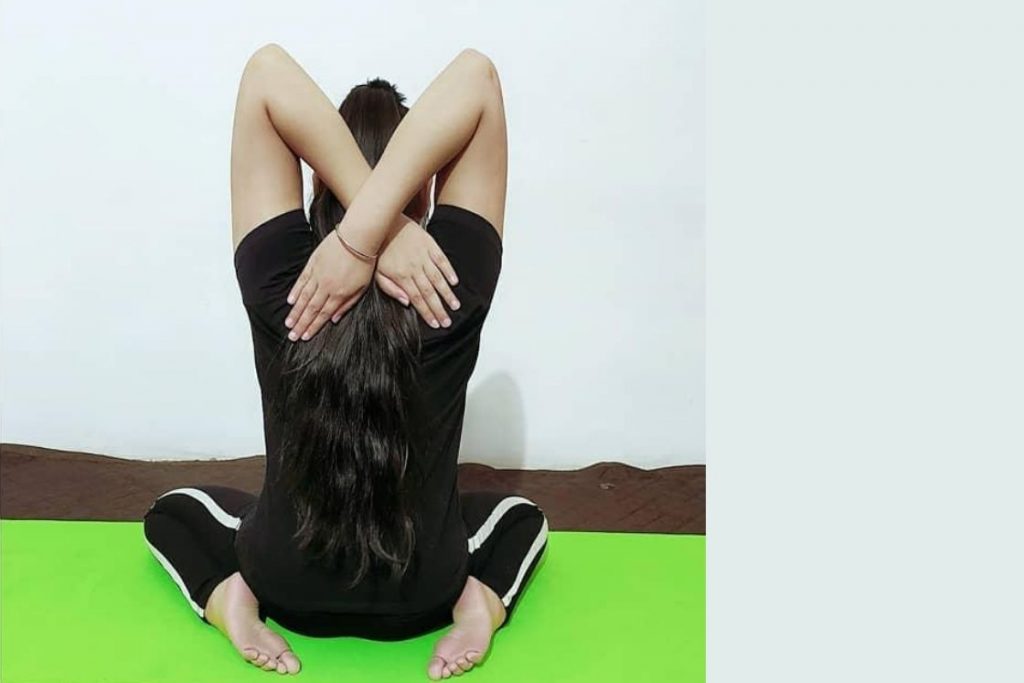
In this variation, in contrast to basic Mandukasana pose the trunk remains upward & straight. Then hands take back and crossed each other at wrists. It’s called Uttana Mandukasana.
- Begin with Vajrasana after that spread your knees apart, let your big toes touch each other behind the buttocks.
- Come in Jalandhar bandha – Chin to the chest lock. One can opt for Urdhva (to Gaze upward or ceiling side) and Bhrumadhya Drishti for this asana.
- Raise your both arms up and cross them while taking them behind the shoulder and touch the upward position of your shoulder blades.
Mandukasana Benefits
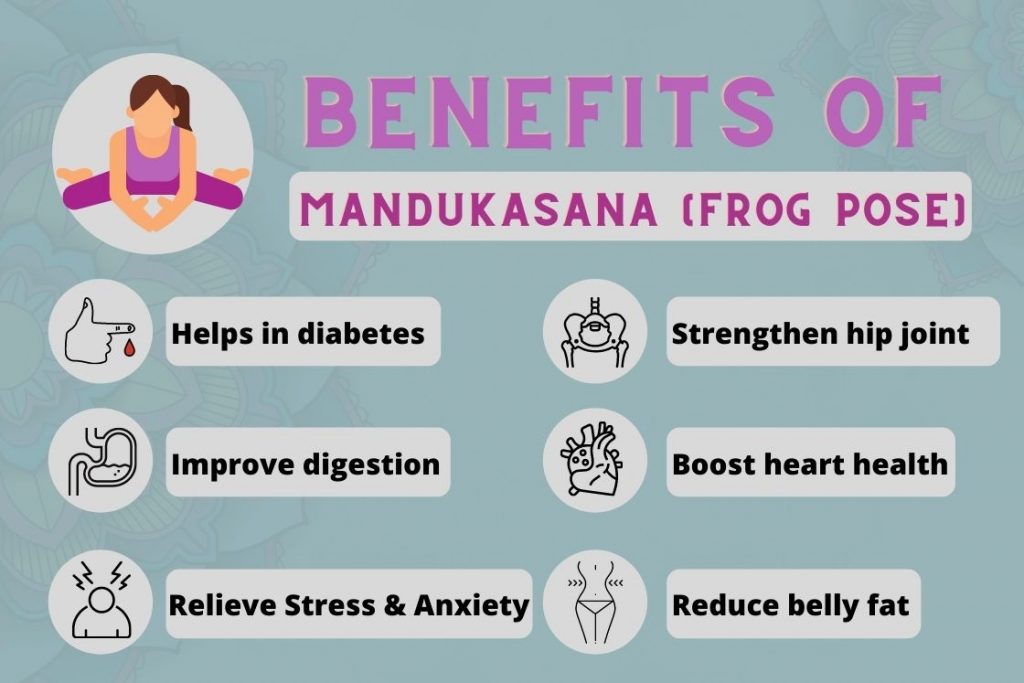
- It lays pressure on the abdomen that massages and stimulates abdominal organs thus restore health and alleviate concerning problems.
- In Madukasana, the pancreas gland gets pressed which stimulates insulin secretion, thus helps diabetic patients
- Lowering head while forward bending rushes blood towards the brain that soothes its tissues. This eradicates stress and relaxes the mind.
- Mandukasana enhances the metabolism that burns off the extra fat from the belly and waist.
- The second variation of mandukasana helps in stretching the upper torso that further assists in pulmonary functions. It also makes shoulder supple and flexible.
- It stretches and strengthens hips, lower back, ankles, and knees. Moreover, it improves blood flow that ensures their growth.
- The first variation of this asana opens the hip joint and increases the range of pelvic movements. It also stretches the spine and strengthens forearms.
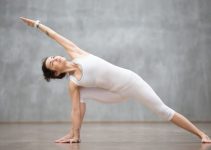
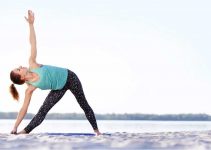
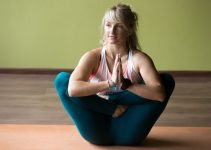
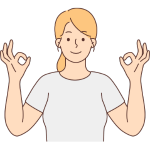
 Oct 24th to 30th
Oct 24th to 30th Learn Mudras
Learn Mudras  Deepen Your Practice
Deepen Your Practice  Find Inner Peace
Find Inner Peace
Hari ॐ ?
I love to read your article.
But one correction is there… In Hatha Yoga Pradipika only 16 Asanas are there, not 32. And this one is not mentioned in it.
In Gherand Samhita of course 32 Asanas are there…
It’s now corrected. Thanks for informing.